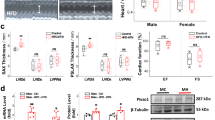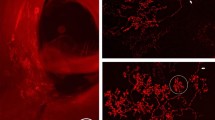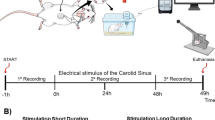Abstract
CARDIOVASCULAR baroreceptors are sensitive to vascular pressures and their input to the central nervous system is essential for the regulation of arterial blood pressure. They also contribute to the regulation of extracellular fluid volume, because their reflex effects upon arterial pressure and renal blood flow have marked consequences for urine flow1,2. Since they are mechanoreceptors their properties may be affected by sodium and potassium ions3–5. Lowering extracellular Na+ (Nao+) increases the threshold pressure at which arterial baroreceptors begin to discharge and reduces their sensitivity to suprathreshold pressures6,7. We therefore investigated the reflex effects upon arterial blood pressure and urine flow elicited by lowering the Nao+ of carotid sinus baroreceptors. We report that reductions in Nao+ of as little as 5% increase arterial blood pressure and urine flow. We propose that the sodium sensitivity of baroreceptors is important for their function as regulators of arterial blood pressure and body fluid volume.
This is a preview of subscription content, access via your institution
Access options
Subscribe to this journal
Receive 51 print issues and online access
$199.00 per year
only $3.90 per issue
Buy this article
- Purchase on Springer Link
- Instant access to full article PDF
Prices may be subject to local taxes which are calculated during checkout
Similar content being viewed by others
References
Vander, A. J. Renal Physiology (McGraw-Hill, New York, 1975).
Guyton, A. C., Taylor, A. E. & Granger, H. J. Circulatory Physiology II: Dynamics and Control of the Body Fluids (W. B. Saunders, Philadelphia, 1975).
Katz, B. J. Physiol. 111, 261–282 (1950).
Edwards, C., Terzuolo, C. A. & Washizu, Y. J. Neurophysiol. 26, 948–957 (1963).
Gray, J. A. B. & Sato, M. J. Physiol. 122, 610–636 (1953).
Brown, A. M. Int. Symp. Cardiac Receptors, Leeds, UK, September 14–17 (1976) Abstract.
Saum, W. R., Ayachi, S. & Brown, A. M. Circ. Res. (in the press).
Brown, A. M., Saum, W. R. & Tuley, F. H. Circ. Res. 39, 488–496 (1976).
Saum, W. R., Brown, A. M. & Tuley, F. H. Circ. Res. 39, 497–505 (1976).
Bello-Reuss, E., Trevino, D. L. & Gottschalk, C. W. J. clin. Invest. 57, 1104–1107 (1976).
Share, L. & Levy, M. N. Am. J. Physiol. 203, 425–428 (1962).
Selkurt, E. E. Circulation 4, 541–551 (1951).
Author information
Authors and Affiliations
Rights and permissions
About this article
Cite this article
KUNZE, D., SAUM, W. & BROWN, A. Sodium sensitivity of baroreceptors mediates reflex changes of blood pressure and urine flow. Nature 267, 75–78 (1977). https://doi.org/10.1038/267075a0
Received:
Accepted:
Issue Date:
DOI: https://doi.org/10.1038/267075a0
This article is cited by
-
The effect of acetylstrophanthidin on the responsiveness of left atrial type B receptors to saline infusion and veratrine injection in anaesthetized cats
Pfl�gers Archiv European Journal of Physiology (1986)
Comments
By submitting a comment you agree to abide by our Terms and Community Guidelines. If you find something abusive or that does not comply with our terms or guidelines please flag it as inappropriate.



